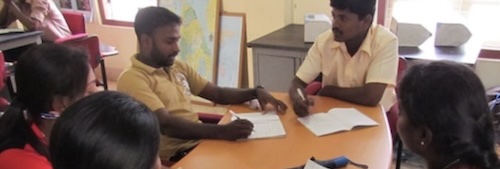 Find out how to make the best use of the training material on Media Helping Media.
Find out how to make the best use of the training material on Media Helping Media.
Media Helping Media (MHM) works to safeguard the core principles of accurate and impartial public service journalism for future generations. We provide exercises, workshops, lessons, course modules, and tools that are free to download, adapt, and use, ensuring essential journalistic fundamentals remain accessible to all.
 Try our introduction to journalism curriculum then take the MHM news professionalism test.
Try our introduction to journalism curriculum then take the MHM news professionalism test.
 Media Helping Media provides free journalism and media management training resources.
Media Helping Media provides free journalism and media management training resources.
 Check our Facebook page for regular updates from Media Helping Media.
Check our Facebook page for regular updates from Media Helping Media.
 Media Helping Media is proud to be hosted by the Fojo Media Institute.
Media Helping Media is proud to be hosted by the Fojo Media Institute.
 The content on Media Helping Media (MHM) is released via Creative Commons BY NC SA 4.0.
The content on Media Helping Media (MHM) is released via Creative Commons BY NC SA 4.0.
Developing and applying news sense
How do we know what is “news”? There are millions of things going on in the world all the time and only some of them become news stories.
How to produce a radio news bulletin
Putting together a radio news bulletin is like preparing a satisfying meal that leaves your audience nourished and prepared for the day
Tool: News story checklist
The follow is a structured checklist tool for journalists to consider in order to ensure they produce strong news stories.
Beyond basic fact-checking
Fact-checking is a complex, evidence-based process which goes beyond simple verification, demanding critical thinking and contextual analysis.
Good journalism has always been about data
We are all data journalists, even those who may have never heard of the term before. Data journalism has been around for years, it's just more accessible and useful now.
How to motivate journalists
Your daily news meeting should set the tone for everything your news organisation does. It should be dynamic, brimming with original ideas and angles, inclusive and agenda-setting.
Fairness in journalism
Fairness in journalism means exploring all sides of an issue and reporting the findings accurately.
Why editorial ethics are important
The Media Helping Media ethics section is designed to help journalists navigate some of the challenges they might face as they go about their work.
Photojournalism and ethics
The following are commonly accepted ethical guidelines for photojournalists adopted by most mainstream media.
Getting the best out of a news meeting
The following is a list of the essential elements required to ensure a successful daily newsroom meeting that provides a clear outline of what news stories are being covered.
How to be a hands-on editor
A hands-on editor should be visible and positive, lead well-prepared news meetings with strong communication skills, be present when big stories break, praise publicly, correct privately, and trust their staff.
Building a news team from scratch
Selecting, training and organising a strong news team is a challenge in any circumstances, but doing so in a refugee camp with no resources is an amazing achievement. One editor explains how it was done.
Establishing a market differential
This article sets out the process for producing original, in-depth, issue-led journalism designed to inform the public debate.
Creating a converged news operation
A converged news operation offers improved quality control, more efficient workflows, cost savings, a steady flow of original journalism across all devices, and new resulting business opportunities.
Setting up a media business
A media business is like a table with four legs - the target audience, the editorial proposition, values, and the market.
Legal threats – scenario
In this scenario a local newspaper reporter faces legal threats for a factual planning application report that lacked the applicant's demanded "positive spin."
Withholding information – scenario
In this scenario a journalist comes across information that changes the focus of a story the editor had asked them to write. Should they include it or withhold it.
Emotional pressure – scenario
How should a reporter respond when someone uses emotional pressure and threats to try to stop them doing their job?
Tool: Evaluation and Impact Assessment
Training should always be judged by its effectiveness, and there are several tools for measuring success. The following is to evaluate the assess the impact of the training.
Wanted, your media know-how
Have you got any journalism expertise that you are willing to share with others? If so, please get in touch.
Training needs assessment
Thorough research is the essential if you are to deliver high-impact media training. Never accept a brief from media managers without question - they could be wrong and often are.